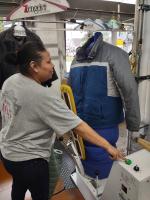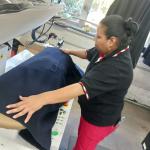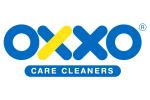CHICAGO — While it’s always important to keep paying customers happy and bringing their business into the plant, dry cleaners have a long history of going beyond that to help their communities and those around them who could use their services and expertise. This work also has the benefit of raising the profile of the company in the eyes of current and potential customers.
In Part 1 of this series, we explored some of the ways that dry cleaners can provide needed services to those in their community. Today, we’ll examine what this work can mean for the cleaner’s company and team atmosphere.
A Caring Culture
In addition to helping those in need, charitable work also helps improve the morale of the drycleaning team when they see the work they do translated into much-appreciated aid.
“It creates an opportunity for both the employees and the customers to work together and to get behind some great community efforts,” says Tom Zengeler, president of Zengeler Cleaners, headquartered in the Chicago suburb of Elk Grove Village. “It’s a combination of employees and customers. They work together. And then, people hear about events like our prom dress drive, for instance. People send dresses to us from Florida and Canada and Texas and Arizona. The team members really get excited about the efforts.”
Kimberly Wilkinson, owner of four Lapels Dry Cleaning locations in the Marshfield and Hanover, Mass., area, has also had that experience with her team.
“It feels good to help,” she says. “Some days, we can think, ‘We are just a drycleaning company — what’s the big deal?’ But when you can help an organization, whether it’s through doing some cleaning or transportation, it does feel good. It brightens the day.”
For Ken Sandy, managing partner of Dryy Garment Care in the Washington, D.C., area, doing charitable work actually helped the business during a slow — and scary — time.
“We went into overdrive during the pandemic,” Sandy says. “I had 52 employees standing around. We had some resources, we had our facility, we had PPP [Paycheck Protection Program] money that we used properly, and our communities were really, really hurting.”
Sandy first put the company’s delivery vans to work.
“The vans are a resource. They’re mobile, they can transport anything you choose, as long as it’s safe,” he says. “We gathered gently used clothing and perishables for food outposts and set up these outposts in the community. We had ready-made meals that people could come and get. We met them where they were at, and it’s important to meet them where they are at, so they don’t feel judged. As we started to come out of the pandemic, we learned that we were really onto something.”
It’s important to get buy-in from your company’s staff before starting on any charitable endeavor, according to Sandy.
“It used to be much more difficult, before we had an all-enrolled culture,” he says. “Our employees now enjoy it, but they used to fight me on merging charity work in. They now see it, and they feel good about themselves.”
Getting the Word Out
While doing work that benefits the surrounding community feels good, it can also bring business benefits. While marketing isn’t the goal of Zengeler’s charitable efforts, it does provide a boost.
“It creates earned media for us, and obviously in a positive way,” he says “It identifies us as a partner in the community, and we become considered as part of the fabric of the community. A lot of times, we don’t even know about all the earned media it creates. It’s a very nice opportunity for us.”
Sandy agrees with this assessment: “I think that it shows the community we really care, and that we care about adding value. I don’t think you’ll ever be able to quantify this particular metric about how outreach drives numbers. People have tried to do it, but I think it’s impossible. I’m confident, though, that it creates more business for us.”
Raising the visibility of her business, Wilkinson says, is a major benefit of her charitable work.
“It’s an opportunity to get our name out among large groups at one time,” she says. “During the coat drive, we reached more than 5,000 families. The visibility is huge. Where we do uniform cleaning for high school teams, that’s 50 families that we can directly impact. They put our logo on the website and in the program, as someone who contributes to the team or to the organization.”
This visibility not only bolsters her standing with existing customers but also allows her business to rise above the noise of competition in seeking new potential clients.
“One of our questions we ask a new customer is what brought them in, and they’ll say, ‘My son plays on the hockey team,’ or ‘I was at such-and-such event, and I won the raffle,’” she says. “It’s hard to quantify, but I know from talking with our customers, especially our new ones, that there is a direct correlation. It’s a win-win situation.”
Come back Tuesday for the conclusion of this series, where we’ll look at mixing charitable efforts into the workflow and where cleaners can find ideas for their outreach. For Part 1 of this series, click HERE.
Have a question or comment? E-mail our editor Dave Davis at [email protected].


























